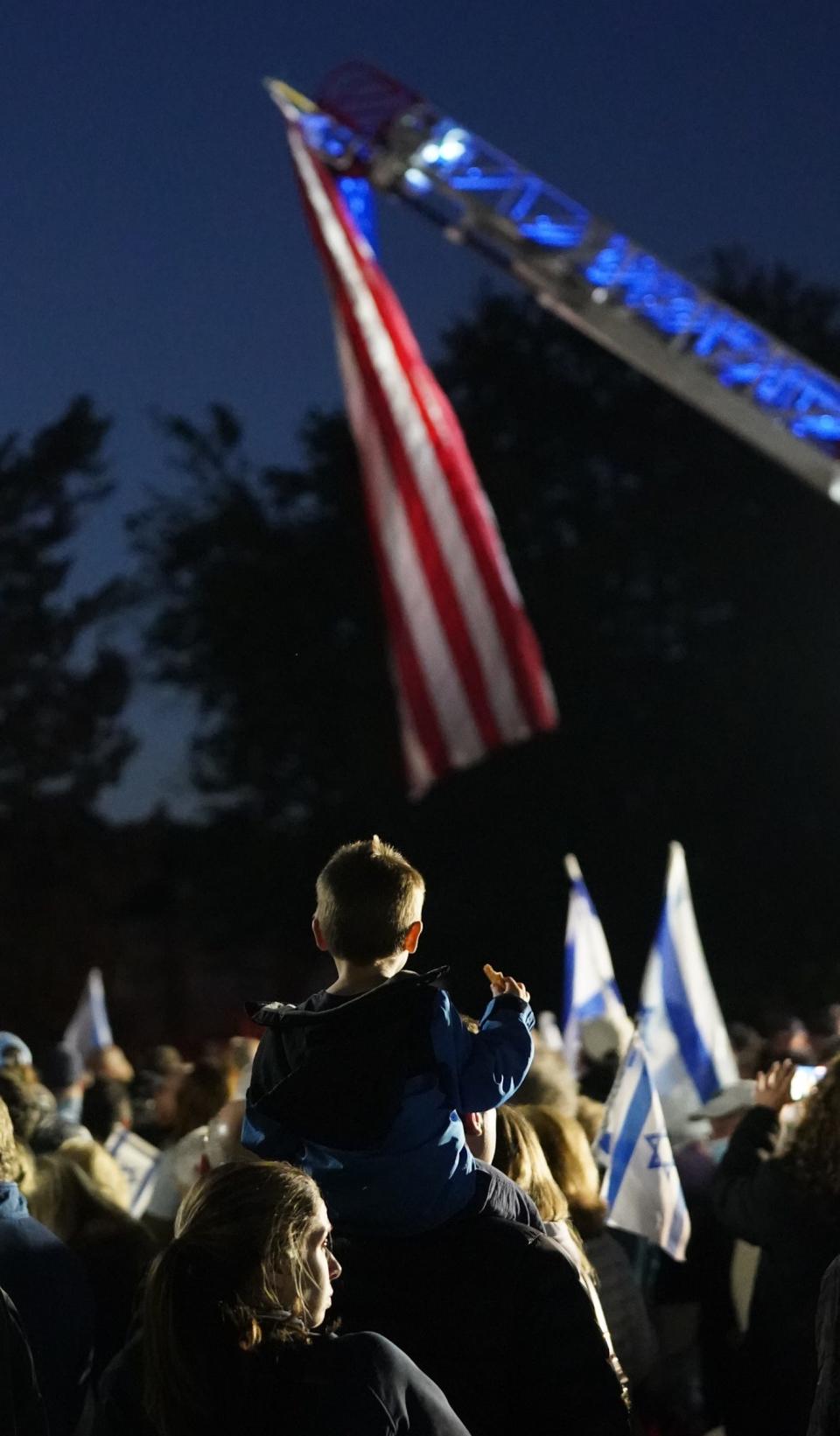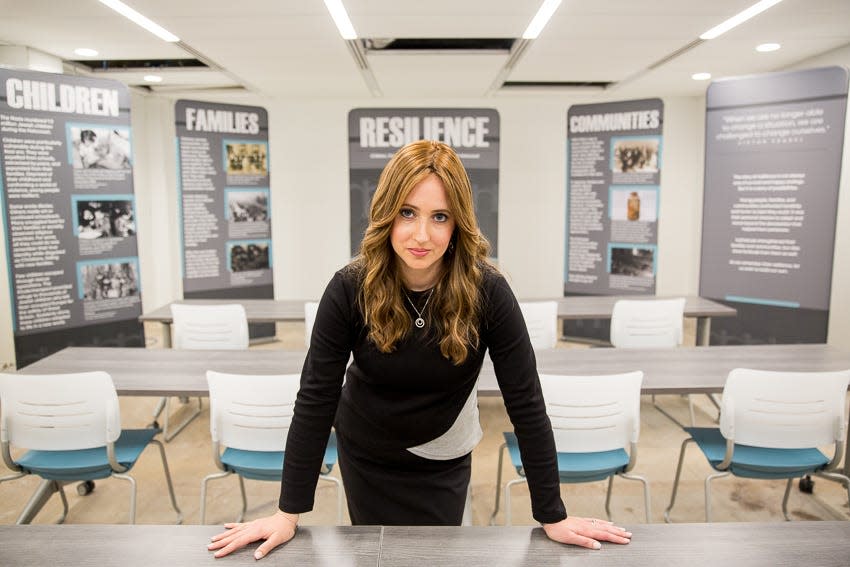Israel: We must use our voices to change the shocking reality
Forty-three minutes of previously unseen footage from Hamas’s terror attacks in Israel were released last week. Invited to view imagery too horrific for public broadcast, dozens of seasoned war reporters had visceral reactions, with some covering their faces to avoid seeing the brutalities Hamas had perpetrated. This follows two weeks of seemingly ubiquitous online imagery of desecrated and charred bodies, murdered babies and mothers screaming for their children taken hostage. Never in my life have I seen so many trigger warnings for graphic content.
And that is saying something, given that I am a Holocaust Museum curator and educator. I encounter videos and images displaying torture, mass killings and unspeakable evil every day and consider how to teach this difficult history. I was not alone in observing that one of the happiest days of the Jewish calendar became a scene of carnage reminiscent of the destruction left in the wake of Nazi soldiers. But what has struck me in the deluge of images from the Hamas-led massacre and subsequent videos of the hostages are the differences from how the Nazis managed evidence of their crimes.
Hitler famously instructed that “No Jews Allowed” signs be removed in advance of the 1936 Olympics in Germany and even built a model concentration camp to conceal the Nazi’s barbarism. But Hamas has reacted quite differently, spreading images to celebrate their actions and rally support behind their cause. This raises the question of whether looking at such material or forwarding it on gives aid and comfort to the enemy. Does our bearing witness to similar imagery from the Holocaust have anything to teach us about how to look at and share such images that transcend mere trigger warnings?

Although there’s no turning back the clock on the horrific events of 10/7, the images that have been generated are essential to preserving this painful part of the Jewish people’s history. No less a figure than General Dwight D. Eisenhower would agree. In April 1945, he toured Ohrdruf, the first Nazi concentration camp liberated by the U.S. Army. Unprepared for the ghastly scene of emaciated prisoners and stacks of dead bodies, he had the foresight to document the atrocities he discovered and attempt to thwart future Holocaust denial: “I felt that the evidence should be immediately placed before the American and British publics in a fashion to leave no room for cynical doubt.”
The lesson for today is clear. The world must know about the antisemitic attacks perpetrated by Hamas and their savage kidnapping of grandmothers and babies. The façade of antisemitism may change, yet Eisenhower’s message still rings true: shocked as you may be in the moment, the day will come when others will attempt to deny what happened. If history has taught us anything, it is not to allow antisemitic propaganda to write the narrative. It seems obvious that we should spread information to prevent the spread of misinformation.
But unlike Eisenhower, we do not have to encounter these images unprepared and can be intentional in how they are shared. Through my work, I know that seeing gruesome images of brutalities can be emotionally and psychologically dangerous. If you are a victim of violence or abuse, you are at increased risk of experiencing vicarious trauma when exposed to these horrific realities. There is a reason why this latest wave of pictures and video has not (yet) been released. Images cannot be unseen and difficult knowledge cannot be unlearned.
My experience researching visitor reactions at Holocaust museums has taught me that everyone copes differently when encountering graphic documentary evidence. Nevertheless, there are best practices that people can follow to mitigate secondary traumatic stress. Consuming news and information in small amounts will give your mind a respite when trying to comprehend the incomprehensible. Muting the audio on a video and creating distance when viewing graphic images by darkening your screen, tilting your phone at an angle, or minimizing the size of the content can help create an emotional safety buffer. If possible, watch the news in a public space or with a friend or partner. Most of all, honor your limits. It is OK to say you are not OK and need to look away; in fact, it may be a sign of your humanity and capacity for empathy.
More perspective: We must not – we cannot – allow the normalization of antisemitism in society
We need to be equally intentional about our actions before forwarding an image or posting a video. Do not just offer a trigger warning but raise awareness when documenting an image or video. Kidnapped people need to be brought home and our actions in spreading the word from afar can make a difference. Bringing the suffering of others to light to honor their memory is a noble and heartfelt response. But be careful what you share; the knowledge you may be ready to handle may be too much for someone else.
We need to safely bear witness to the crimes against humanity taking place today and use our voices to change the shocking reality. We owe it to the victims, to ourselves and to future generations. But we can do this wisely and compassionately, using the tragic knowledge gleaned from 80 years of teaching about the last time so many Jews were killed.
Dr. Julie Golding is the curator at the Holocaust Museum & Center for Tolerance and Education in Suffern, New York, and director of fellowships at Touro University.

This article originally appeared on NorthJersey.com: Israel war: We must use our voices to change a sad reality

